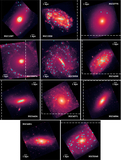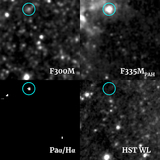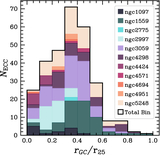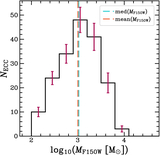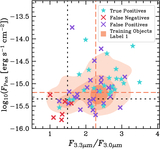Image Details
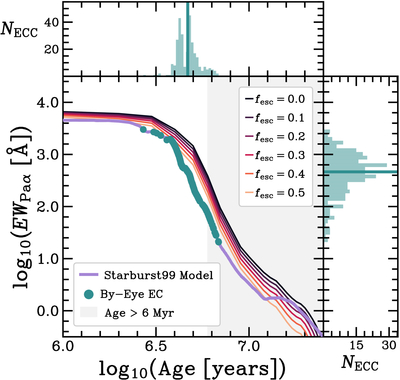
Caption: Figure 5.
Cluster candidate ages using photometric Paα equivalent widths (see Section 5.2.1 for details). The cyan circles show the distribution of 291 sources with good age estimates using the Starburst99 model (purple). The histograms show the distribution of these sources on each axis with the medians indicated by a vertical line. A majority of our embedded cluster candidates are less than 6 Myr old, with a significant portion less than 5 Myr old (73%). For comparison, six CIGALE models are shown with color indicating the escape fraction modeled. These models show that the age derived will vary significantly at lower equivalent widths and less so for high equivalent widths. The young ages derived via Paα equivalent widths indicate that it is likely that the first supernovae have yet to unbind the natal shroud of gas and dust (S. T. Linden et al. 2023; S. Deshmukh et al. 2024).
Copyright and Terms & Conditions
© 2025. The Author(s). Published by the American Astronomical Society.


